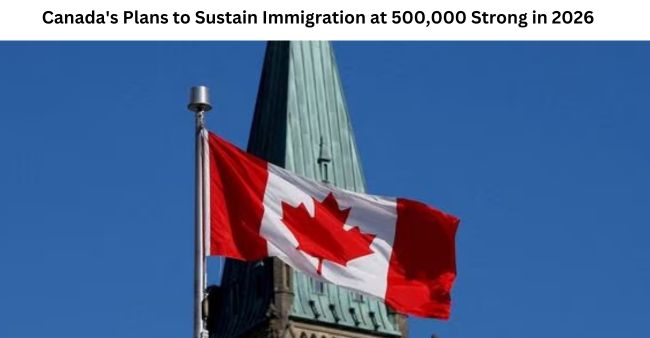
India-Canada: The Canadian government has announced that it is aiming to maintain its target of welcoming 5,00,000 new permanent residents in 2026, reported CBC News. This decision is part of a broader strategy to address labor supply issues while relieving pressures on the nation’s housing and healthcare systems.
Canadian Immigration Minister Marc Miller emphasized the importance of comprehensively analyzing the micro-economic impacts of immigration, a viewpoint shared by both the Canadian public and economists. Speaking at a press conference, he underscored the necessity for precise and measured adjustments in the immigration strategy.
In recent years, Canada has gradually increased its immigration targets in order to strengthen its workforce and provide critical support to its aging population. Canada launched a plan in the current fiscal year 2023 to grant permanent residency to 465,000 people, with the goal of increasing to 500,000 by 2025. This represents a significant increase from the immigration target of less than 300,000 in 2015.
The decision to uphold the current immigration target for 2026 underscores the government’s resolute commitment to fine-tuning immigration programs for optimal results. Miller also stressed the need for a precision-oriented approach, acknowledging the intricacies involved in managing immigration.
Canada’s population has increased dramatically, and it will surpass the 40 million mark earlier in this year. This significant demographic shift has occurred concurrently with the country’s struggle with a housing shortage, as detailed in a Canada Mortgage and Housing Corporation report. According to the report, nearly 5.8 million new housing units must be built by the end of the decade to address the housing supply, a task made more difficult by ongoing population growth.
While Miller acknowledged the role of the housing shortage in the decision to maintain current immigration levels, he also emphasized that it was not the sole determining factor. “Those numbers were needed but now we have to take a look at them, where we feel they’re reasonable and plateauing in a space where we think it makes sense,” he said.
“We have a lot of complex calculations that we need to make and measures we need to adjust. I think it’s sometimes politically convenient to come out with a hammer-type approach… It’s more on the level of finer surgery that we need to adjust,” he added.
According to the new immigration plan, Canada’s target for economic immigrants remains at 60% of the total immigration. Goldy Hyder, president and CEO of the Business Council of Canada, has advocated for an increase to 65% to address unfilled job openings for highly skilled professionals and mitigate the impact on technological innovation, labor productivity, and capital investment.
The government’s decision to uphold a stable immigration policy underscores its unwavering commitment to addressing critical demographic, labor, and economic challenges while taking a measured and calculated approach to fine-tuning the strategy for future success, as per ANI.